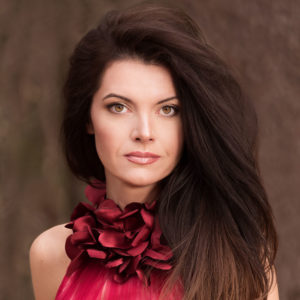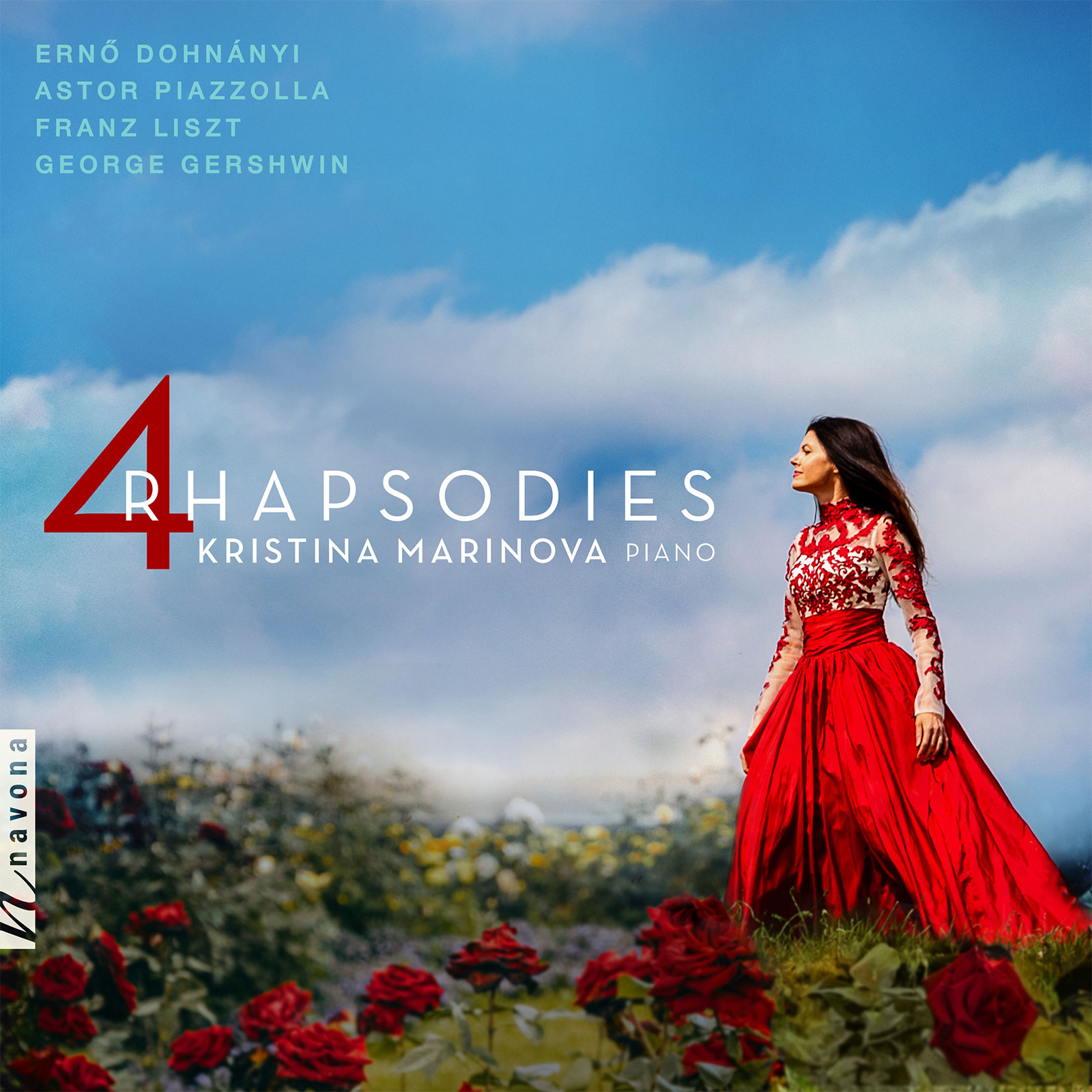4 Rhapsodies
Kristina Marinova piano
Ernő Dohnányi composer
Astor Piazzolla composer
Franz Liszt composer
George Gershwin composer
4 RHAPSODIES from critically-acclaimed pianist Kristina Marinova and Navona Records is a collection of vibrant, dynamic, and technically demanding works for solo piano. The album’s titular piece, Four Rhapsodies op. 11 by early 20th-Century composer Ernst von Dohnányi is rarely performed in concert given the level of musicianship it requires of pianists. Now, its combination of stark drama and dazzling virtuosic passages may be enjoyed by listeners everywhere. This impressive piece, along with works by the likes of Astor Piazzolla, Franz Liszt, and George Gershwin, makes for a varied collection of masterworks performed by the gifted hands of Kristina Marinova.
Listen
Stream/Buy
Choose your platform
Performance Video
Astor Piazzolla – Tango Rhapsody (Adiós Nonino) | Kristina Marinova, piano
Track Listing & Credits
| # | Title | Composer | Performer | |
|---|---|---|---|---|
| 01 | Four Rhapsodies Op.11: I. Allegro non troppo, ma agitato (G minor) |
Ernő Dohnányi | Kristina Marinova, piano | 9:57 |
| 02 | Four Rhapsodies Op.11: II.Adagio capriccioso (F♯ minor) | Ernő Dohnányi | Kristina Marinova, piano | 6:42 |
| 03 | Four Rhapsodies Op.11: III. Vivace (C major) | Ernő Dohnányi | Kristina Marinova, piano | 5:33 |
| 04 | Four Rhapsodies Op.11: VI. Andante lugubre (E♭ minor) | Ernő Dohnányi | Kristina Marinova, piano | 7:23 |
| 05 | Tango Rhapsody (Adiós Nonino) | Astor Piazzolla | Kristina Marinova, piano | 9:14 |
| 06 | Rhapsodie Espagnole (Spanish Rhapsody), S.254, R.90 | Franz Liszt | Kristina Marinova, piano | 13:36 |
| 07 | Rhapsody in Blue | George Gershwin | Kristina Marinova, piano | 16:14 |
Recorded April 6,7,10,11 2021 at Oktaven Audio, Mount Vernon NY
Recording Session Producer & Engineer Ryan Streber
Photography Joe Damone
General Manager of Audio & Sessions Jan Košulič
Audio Director Lucas Paquette
Executive Producer Bob Lord
Executive A&R Sam Renshaw
A&R Director Brandon MacNeil
A&R Jacob Smith
VP, Design & Marketing Brett Picknell
Art Director Ryan Harrison
Design Edward A. Fleming
Publicity Patrick Niland, Sara Warner
Artist Information

Kristina Marinova
Kristina Marinova has been described as a virtuoso performer of extreme energy and youthful vibrance. Her clear and precise tone enhances her stormy expressions and performances, full of grace, serenity, style, and beauty. Her album entitled 4 RHAPSODIES, which she performed live at Carnegie Hall on November 17th, 2022, has been called “A Feast for the Ears” by Darren Rea of Classical Music Review Magazine.
Notes
“There is no feeling that does not find relief in music.” — George Eliot
As a highly sensitive person, for my entire life, I have been fascinated with human emotions, their triggers and consecutive responses. During my musical journey of the FOUR RHAPSODIES, I discovered an odyssey of sounds—joy, fear, surprise, sadness, anticipation, anger, disgust, birth, love, life, compassion, madness, dance, devotion, spirituality, and death. The rhapsodies became a catalyst for me to express my creative moods, feelings, and musical ideas. Highly emotional, unanticipated in their development and direction, ecstatic, extravagant, full of amplitudes of feelings, the rhapsodies are free, episodic, single movement works where the emphasis is not on structure but expression, color, and improvisation. Opposites and dynamics abound—sentiment and drama, death and rebirth, grief and joy, love and hate, happiness and sadness, compulsion and tranquility, the beautiful and the grotesque. This collection of fine works presents the highest range of technical demands, as well as contrasting moods, colours, and tonal progressions. Inclined by extroverted romantic notions, these compositions express spontaneous inspiration with bursts of improvisation. Performing the rhapsodies requires pianistic stamina and power.
— Kristina Marinova

